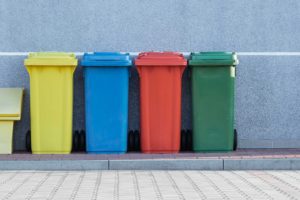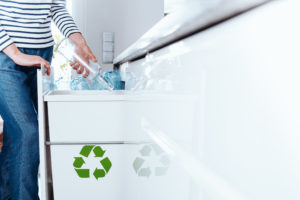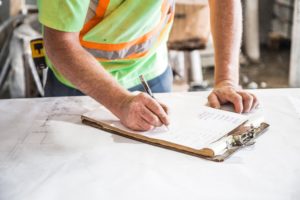
Blog
The New Generation of Sustainability
In January, I applied and was accepted to the Ellen MacArthur Foundation’s (EMF) Circular Economy Pioneer program, From Linear to Circular. The 10 week virtual program, with 70 participants from around the world, is designed for young professionals to continue developing our understanding of the intricacies behind creating a circular economy and what it will take to make that goal a reality.
A circular economy aims to decouple economic activity from the consumption of finite resources by designing waste out of the system, keeping products and materials in use and regenerating natural systems. As the manager of packaging and sustainability at the Consumer Brands Association, I was able to use the EMF program to build on my experience developing a circular economy for packaging with major consumer packaged goods (CPG) brands and bring the perspective of industry to the conversations had among my peers in the program. Sustainability is critically important to the CPG industry. In fact, all of the largest 25 CPG companies have made commitments to make their packaging more sustainable. Many work closely with EMF to set and meet their targets.
Just a few months ago, before we saw the impact of COVID-19 on global supply chains, I had a more simplified perspective on the magnitude of the interdependency between every stakeholder in the value chain. I knew the transition to a circular economy was a global issue, but when the pandemic hit and the world began to feel the weight of global supply chains buckling at the pressure to fill demand, I had the realization of just how truly complicated it will be. My interest in environmental economics has always been based on the idea that we can develop a better system that is more inclusive of the consumers it’s meant to serve while operating within the confines of earth’s natural resources. COVID-19 has only heightened the need to accelerate this way of thinking into our mainstream economic system.
The start of the program coincided perfectly with my new existential crisis on how we can create a more resilient system, built for today’s world and its challenges. In a world consumed by shutdowns, fear and uncertainty, one hour a week with fellow sustainability peers was my ray of hope, as we were challenged to talk through the technical aspects of developing an economic system that can withstand variability and limit the consumption of non-renewable resources. The group had wildly diverse skillsets, bringing together material engineers, waste reduction specialists, developing country policy experts, urban planners, sustainable fashion designers and more. Despite our different backgrounds, every stakeholder agreed on the need to employ circular economy principles for real success.
I went into the program with years of experience studying the circular economy but emerged with a heightened understanding of real-world applications across various industries. While I was able to bring expertise on the ways CPG companies have been focusing efforts to create a circular economy, I learned fascinating ways that other industries and countries are thinking about designing waste out of their products and technical challenges for sustainable material alternatives.
Throughout the ten weeks, my biggest takeaway was also the most practical — in order to see real impact at scale, we will need a massive and coordinated effort among every value chain stakeholder, government, NGO and consumer.
From Linear to Circular has given new meaning to the work we’re doing at Consumer Brands, especially with the Recycling Leadership Council (RLC). While every industry comes to the table with a different perspective on which solutions will be the most impactful, we all agree that there is a major crisis to be solved and that we need each other’s input to develop impactful solutions. Through RLC-led stakeholder webinars, a series that provided a platform to share best practices and lessons learned from existing efforts, we’ve identified the most important tenants of a functioning recycling system and will take what we’ve learned to offer federal policy proposals to make recycling in America more effective and efficient.
Recycling isn’t a silver bullet solution to create a circular economy for packaging. However, it is a critical foundation to being able to design out waste and pollution, while keeping valuable material flowing through the economy.
As I reflect back on the past few months, I’m excited to be part of what lies ahead. COVID-19 has pushed the capabilities of our economic system, but I am hopeful that the silver lining is collective action toward a better future.
Published on August 13, 2020




